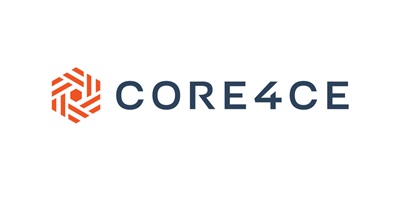In the wake of high-profile cyberattacks on healthcare organizations, it has become abundantly clear that no hospital or clinic is immune to cybersecurity threats. While many healthcare systems have bolstered defenses around electronic health records (EHRs) and payment systems, implanted medical devices still present a significant and often overlooked cybersecurity risk.
Medical devices, such as pacemakers, insulin pumps, cochlear implants, neurostimulators and more have improved patient health outcomes worldwide. However, their reliance on software and connectivity opens them up to unique cybersecurity risks. For hospital executives and clinic managers, understanding these vulnerabilities and adopting security best practices is critical to safeguarding patient safety, data and medical operations.
Implanted Medical Device Cybersecurity Risks
Cyberattacks on implanted devices can have grave repercussions, including exposing sensitive health information or direct harm to patients, such as by compromising insulin dosages or pacemaker settings to cause severe medical reactions.
Implanted medical devices come with default passwords set by manufacturers, which are rarely changed before use. This creates an easy entry point for cybercriminals, who can find these passwords in public databases. Updating device firmware is also key to maintaining security, but regulatory hurdles can cause delays in patch deployment. Regulatory bodies like the FDA and similar organizations worldwide often require lengthy patch approval processes. This gap can leave patients exposed to known cyber threats.
These medical devices can also connect to hospital and healthcare networks, potentially allowing direct access or lateral movement within databases and web servers and exposing valuable patient, healthcare, and/or financial data. Misconfigured network settings can also create vulnerabilities, offering attackers a way in. It is essential for healthcare leaders to understand and mitigate these risks.
Regulatory Approaches and Challenges
Healthcare systems also face several global regulatory challenges for medical device cybersecurity. By staying informed of regulatory frameworks and aligning with security strategies for each operating region, organizations can maintain compliance while improving safety and strengthening defenses.
Here is an overview of the primary regulatory approaches and some of their challenges:
- United States: The Food and Drug Administration’s (FDA) approach mandates that cybersecurity is built into devices from design through ongoing updates. This ensures that manufacturers consider security early on, but the FDA’s patch approval process can bottleneck cybersecurity improvements and deployment. Manufacturers must still go through their lengthy approval process for patch updates, even when the vulnerability poses an immediate security risk. To mitigate this issue, it is essential that the FDA adopts a more agile regulatory framework that balances patient safety with the need for timely cybersecurity updates.
- European Union: The EU’s Medical Device Regulation also requires manufacturers to address cybersecurity risks through stringent risk assessments and ongoing monitoring. While comprehensive, the MDR framework also slows the deployment of security updates. This has led some to call for a more streamlined patch approval process.
- APAC Region (Japan, China, and Others): Japan’s Pharmaceuticals and Medical Devices Agency (PMDA) and China’s National Medical Products Administration (NMPA) both emphasize cybersecurity risk management. Japan requires detailed security documentation and flexibility for emerging threats, while China’s standards focus on encryption and data protection. APAC regulatory bodies emphasize alignment with global best practices, prioritizing patient safety and data security.
Key Strategies for Healthcare Executives to Mitigate Risks
To effectively manage the cybersecurity risks associated with implanted medical devices, healthcare executives should consider adopting the following strategies:
- Mandatory Security by Design: Device manufacturers should be required to implement cybersecurity features during the design phase, including using encrypted communications, multi-factor authentication, and built-in update mechanisms that allow for timely patching.
- Change Default Settings: Hospitals and clinics must enforce policies that require passwords and configuration settings to be changed as soon as devices are deployed. This step alone could eliminate a significant number of vulnerabilities.
- Strengthening FDA and Global Regulatory Oversight: The FDA and other global bodies should develop more streamlined processes for security patches, allowing for expediting the review of updates that address critical vulnerabilities.
- Ongoing Training and Awareness: Healthcare providers also need to invest in cybersecurity training programs to ensure that staff are aware of the risks associated with medical devices. This includes developing protocols for responding to cyber incidents involving medical devices.
- Collaboration Between Government and Industry: Finally, global government agencies and the private sector should collaborate more closely to share threat intelligence and best practices for securing medical devices. By having the latest information on medical device threats and potential attack techniques, healthcare organizations can improve their security.
A Global Call to Action for Healthcare Executives
As healthcare organizations remain a top cyberattack target, it’s clear that no corner of the sector is safe—not even implanted medical devices. The risks go beyond data breaches; cyberattacks on these devices can directly threaten patient safety.
For healthcare leaders, staying ahead of these risks means adopting strong, proactive cybersecurity practices. This starts with ensuring devices have secure configurations and up-to-date firmware, despite the regulatory hurdles that can slow patch deployment. Understanding global regulatory frameworks is also crucial for keeping security aligned with requirements. By pushing for security-by-design, advocating for faster patch approvals, and fostering public and private sector collaboration, healthcare executives can protect their patients and their systems from escalating threats.
















